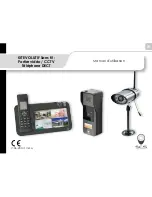
Chapter 2
Using Your NI 653X
2-8
ni.com
Specifying the Transfer Rate
If you are internally generating the REQ signal, you must specify the data
transfer rate. The transfer rate is specified in software by using two
parameters, the timebase frequency and timebase divisor:
where
timebase frequency
= 20 MHz, 10 MHz, 1 MHz, 100 kHz, 10 kHz,
1 kHz, or 100 Hz, and
timebase divisor
= an integer between 1 and 65,355.
For example, if you specify a timebase of 100 kHz and a timebase divisor
of 25, the resulting acquisition/generation rate would be 4 kHz because
100 kHz/25 = 4 kHz.
Note
If you are using a version of NI-DAQ prior to version 6.8, the minimum value for
timebase divisor is 2.
Note
In LabVIEW, you can specify the transfer rate directly using Digital Clock
Config VI (called by DIO Start VI). The software chooses the closest transfer rate by
selecting the frequency and divisor. To see the actual transfer rate, create an indicator at the
actual clock frequency
output of Digital Clock Config VI.
Starting and Stopping Data Transfer—Triggering
By default, data transfer starts upon a software command (the Digital
Buffer Control VI called by the DIO Start VI in LabVIEW and the
DIG_Block_In
and
DIG_Block_Out
functions in NI-DAQ C interface).
However, you can use a hardware trigger to start, stop, or start and stop data
transfer. Trigger signals should be connected as inputs to the ACK1 and/or
ACK2 lines while in pattern I/O mode.
Note
The NI 653
X
supports triggering only in pattern I/0 mode. In handshaking mode,
you cannot use triggering because the handshaking lines are used to start and stop the data
transfer.
Start Trigger
A start trigger is a trigger that initiates a pattern I/O upon receipt of a
hardware trigger on the ACK (STARTTRIG) pin.
transfer rate (Hz)
timebase frequency
timebase divisor
----------------------------------------------
=
















































